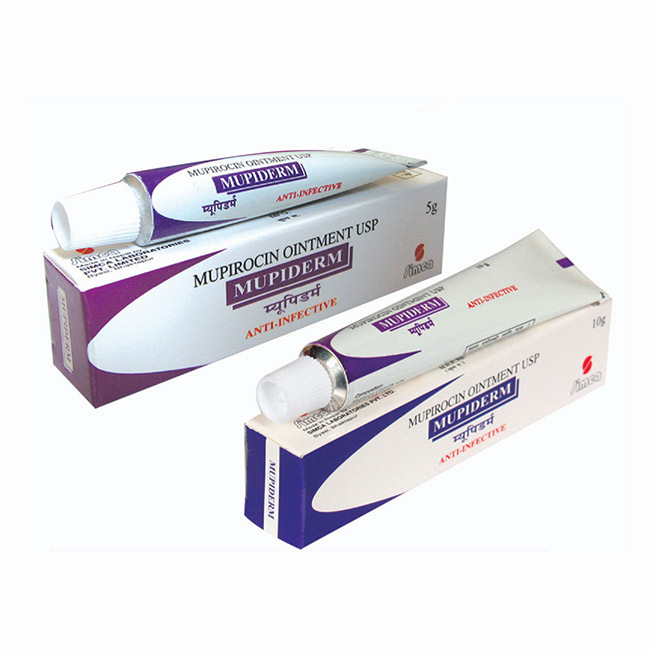Mupiderm 5g/10g
Generic composition: Mupiderm
General Introduction
Mupiderm ointment is 2% mupirocin. Mupirocin is an antibacterial agent obtained by fermentation using Pseudomonas fluorescens.
Therapeutic category
- Anti-bacterial (Topical)
Dosage forms available
- MUPIDERM 5g ointment
- MUPIDERM 10G ointment
Mechanism of action
Mupirocin specifically and reversibly binds to bacterial isoleucyl transfer-RNA (tRNA) synthetase, which is an enzyme that promotes the conversion of isoleucine and tRNA to isoleucyl-tRNA. Inhibition of this enzyme subsequently leads to the inhibition of the bacterial protein and RNA synthesis. Mupirocin is bacteriostatic at lower concentrations but it exerts bactericidal effects with prolonged exposure, killing 90-99% of susceptible bacteria over a 24 hour period.
Pharmacokinetics
Systemic or percutaneous absorption of mupirocin following dermal application is expected to be minimal in adults and children, protein binding of mupirocin is reported to be over 95%, mupirocin undergoes rapid hepatic metabolism to form the principal metabolite monic acid, which has no antibacterial activity, eliminated by renal excretion.
Uses
- Topical treatment of impetigo due to S. aureus and S. pyogenes.
Dose
- 3 times as daily in affected ares for 3-5 days.
Adverse effects
- Burning, stinging or pain, itching, rash, dry skin, tenderness and contact dermatitis.
Precautions
- If impetigo has not improved in 3 to 5 days, contact your healthcare practitioner.
- If a severe reaction suggesting sensitivity or chemical irritation should occur with the use, treatment should be discontinued and appropriate alternative therapy for the infection instituted.
- As with other antibacterial products, prolonged use may result in overgrowth of nonsusceptible organisms, including fungi, 2% is not formulated for use on mucosal surfaces, nasal use.
- Pregnancy category: B
Contraindications
- Hypersentitivity to any constituents


